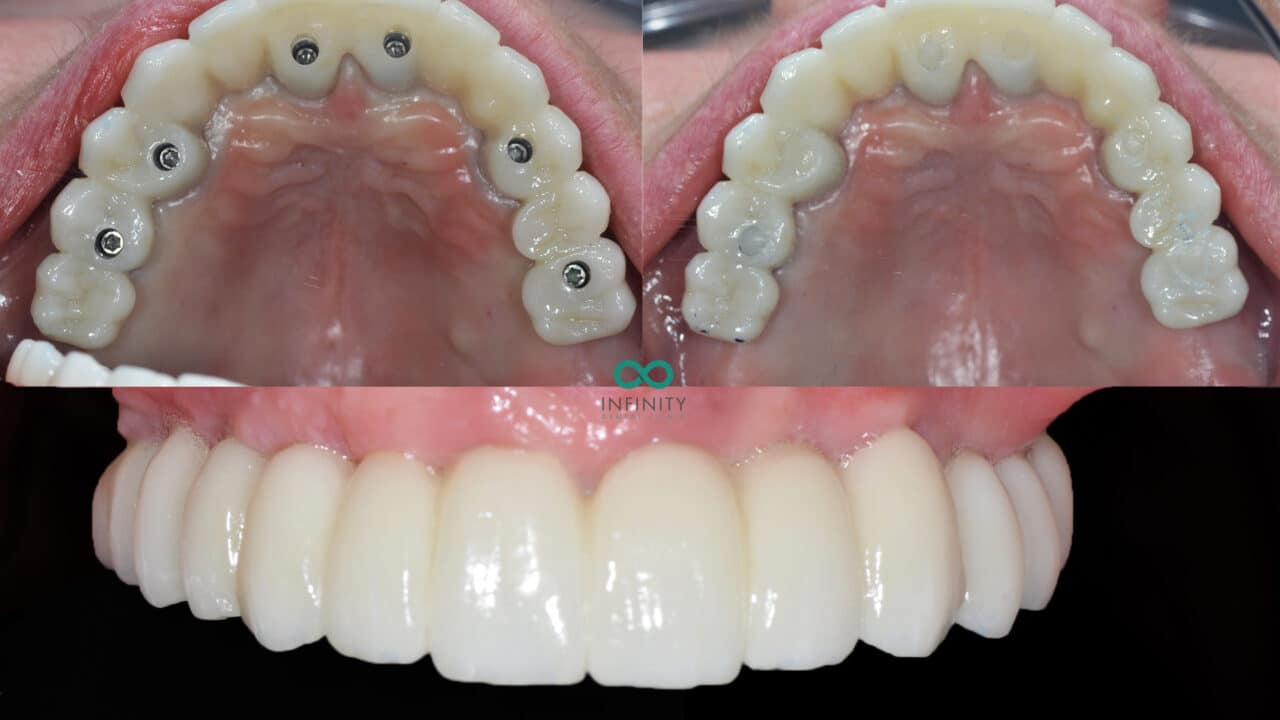The Ultimate Guide To Dental Sense
The Ultimate Guide To Dental Sense
Blog Article
The Buzz on Dental Sense
Table of ContentsThe Dental Sense StatementsDental Sense - TruthsThe 7-Minute Rule for Dental SenseSome Ideas on Dental Sense You Need To Know
are medical devices operatively dental implanted into the jaw to bring back a person's capacity to eat or their appearance. They provide assistance for fabricated (fake) teeth, such as crowns, bridges, or dentures. When a tooth is shed due to injury or illness, an individual can experience problems such as fast bone loss, faulty speech, or changes to eating patterns that lead to discomfort.Oral dental implant systems include an oral implant body and dental implant joint and may also consist of an abutment fixation screw. Root canal procedure. The oral implant body is surgically placed in the jawbone in place of the tooth's origin. The dental implant joint is generally connected to the dental implant body by the joint addiction screw and prolongs with gums right into the mouth to sustain the attached artificial teeth
(https://blogfreely.net/dentalsense1/5eq6ue3fhs)Structure of The Oral Implant System choosing oral implants, speak to your dental supplier regarding the prospective benefits and threats, and whether you are a prospect for the procedure. Points to take into consideration: Your overall health and wellness is a vital variable in identifying whether you are a good prospect for dental implants, the length of time it will certainly require to heal, and the length of time the dental implant may remain in area.
Smoking might affect the recovery procedure and lower the lasting success of the implant. The recovery procedure for the dental implant body might take several months or longer, throughout which time you generally have a temporary joint instead of the tooth. the dental implant treatment: Very carefully follow the dental health guidelines provided to you by your oral copyright.
The Facts About Dental Sense Revealed
Implant failing can cause the need for an additional procedure to take care of or change the dental implant system. Recovers the capability to eat Brings back aesthetic appearance Aids keep the jawbone from reducing as a result of bone loss Protects the health of the surrounding bone and gum tissues Assists keep adjacent (close-by) teeth steady Boosts lifestyle Damage to bordering all-natural teeth throughout implant placement Injury to the surrounding cells throughout surgery, such as sinus perforation Injury throughout surgical treatment (for instance, fracture of surrounding jawbone) Poor feature, such as feeling like the teeth do not attack together usually An experience that the tooth is loosened or twisting in place resulting from an abutment screw loosening Implant body failure (looseness of the implant body) because of systemic infection, which may be more probable in clients with unchecked diabetes due to local infection in bone and periodontals supporting the implant body because of postponed recovery, which may be most likely in people that smoke Problem cleaning up the gums around the dental implant, resulting in poor dental health Unattended gum illness Post-surgical pins and needles due to nerve impingement or damage Always alert healthcare suppliers and imaging service technicians that you have dental implants before any magnetic resonance imaging (MRI) or x-ray procedures.
FDA is not knowledgeable about any kind of damaging events reported for MRI or x-ray treatments with dental implants. Dental implants systems are commonly made from products that adhere to international consensus requirements of the International Organization for Standardization (ISO) or ASTM International. These requirements have details of what makes a risk-free material.

An oral implant is a structure that replaces a missing tooth. With screw-like gadgets, the surgeon inserts an implant right into the jawbone, and it serves as an anchor for an artificial tooth, called a crown. A device called an abutment connects the artificial tooth to the dental implant. The crown is custom-made to fit the person's mouth and match the color of their teeth.
Little Known Facts About Dental Sense.
Some people are not eligible for dental implant surgery. It is for dental surgeons to operate individuals with: acute illnessuncontrollable metabolic diseasebone or look at these guys soft cells condition or infectionIf these problems are solved, a person can have the surgery. In, oral surgeons avoid operating individuals with: If individuals with any one of the above undertake dental implant surgery, there is a greater danger of the implant stopping working.

Oral dental implant surgery is an individualized procedure. It's not the very same for everyone. However the adhering to gives a general introduction of what you can anticipate your dental expert, dental surgeon, periodontist or prosthodontist to do: Place the implant surgically. Offer you time to recover. Connect the post and last crown, bridge or denture.
Next, your surgeon will very carefully place the dental implant right into your jaw. If your implant is near the front of your mouth, your dental professional will make a short-term tooth for you to put on up until you heal.
The Greatest Guide To Dental Sense
Your service provider can inform you what to anticipate in your scenario. During the healing stage, your jawbone should fuse to the oral implant. This process, called osseointegration, is crucial for security and long-lasting success. This process can take anywhere from three to 9 months. Sometimes, it may take much longer.
As soon as your implant heals, your dentist can connect the abutment (small port post) and your final remediation (crown, bridge or denture). This typically takes regarding one hour to complete and may require a 2nd small surgical procedure. You should not feel any kind of pain during your dental implant procedure due to the fact that your supplier will utilize medicine to numb your periodontals.
Report this page